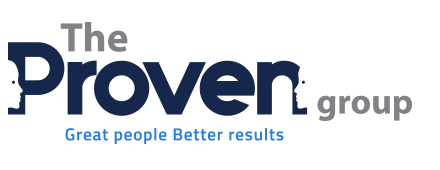As Australia moves into the next decade, a series of demographic and lifestyle shifts are set to reshape the landscape of work. With a growing and ageing population, and evolving cultural diversity, businesses must prepare for a future that demands both flexibility and inclusivity in the workplace. According to Bernard Salt AM, demographer and futurist, these changes present significant challenges and opportunities for employers across the nation.
- Population Growth and Immigration: A Unique Advantage for Australia
Globally, the workforce is shrinking, but Australia stands out with a steady rise in population, largely driven by immigration. While other nations grapple with declining birth rates and an ageing workforce, Australia’s diverse population – with 31% of its citizens born overseas – offers a distinct competitive advantage.
Salt explains that although Australia’s fertility rate has dropped to 1.7 children per woman, immigration at scale is helping to offset this decline. Countries like the United States and Germany have far lower rates of foreign-born residents, which puts Australia in a strong position to continue drawing on global talent. However, as our workforce becomes increasingly multicultural, businesses must ensure their diversity and inclusion strategies are fit for purpose, addressing cultural nuances and providing equal opportunities for all employees.
- A Multigenerational Workforce: Bridging the Gap
Australia’s workforce is ageing rapidly, with more employees working later in life. This creates a multigenerational environment where businesses must accommodate the diverse needs and expectations of employees spanning several age groups. Salt emphasises that HR policies need to evolve to embrace flexible working arrangements, career development pathways, and inclusive practices that cater to all generations.
To retain talent in such a competitive market, employers will also need to shift their focus beyond salaries. With rising costs of living, Australians are increasingly prioritising work-life balance and lifestyle benefits. Offering flexibility, opportunities for learning, and a supportive culture are essential to attracting and retaining the best talent.
- Lifestyle as a Core Value: The Power of Flexibility
Australia’s population has long valued lifestyle over everything else. Whether it’s the desire to live on the coast, work remotely, or take advantage of the nation’s abundant natural beauty, Salt highlights that lifestyle considerations will continue to shape workforce behaviour.
The growing preference for remote and flexible work, which accelerated during the pandemic, is here to stay. In fact, Salt predicts that by 2026, 15% of the workforce will be working from home or in hybrid arrangements, significantly up from the pre-pandemic rate of 5%. This shift reflects a broader trend of employees seeking autonomy and balance in their lives.
For businesses, embracing this change will be crucial to their success. Offering flexible work arrangements and accommodating the evolving lifestyle preferences of younger generations will help organisations remain competitive in a changing job market.
- The Boom in Aged Care: A Sector on the Rise
As Australia’s population ages, the demand for aged care services is set to surge. By 2032, the first of the baby boomer generation will reach 85 years of age, a milestone that will put significant pressure on the country’s healthcare and aged care sectors. Over the next 25 years, the number of Australians aged over 85 is expected to double, highlighting the urgent need for skilled carers and infrastructure to support this growing demographic.
Salt points out that aged care is one of Australia’s fastest-growing industries, with the sector adding 176,000 jobs in the last five years alone. This presents a significant opportunity for those with vision and determination to improve the quality of life for older Australians, but it also poses challenges in terms of workforce training and development.
- Adapting to the Future: What Businesses Can Do
As Australia’s workforce continues to evolve, businesses need to stay ahead of the curve. Salt stresses the importance of aligning your organisation’s offerings with the current and future needs of employees. Whether it’s rethinking diversity and inclusion strategies, investing in employee wellbeing, or adopting flexible work models, businesses must be proactive in shaping their workplaces to attract and retain top talent.
As the labour market tightens, and with sectors like aged care poised for growth, businesses that fail to adapt risk being left behind. However, those that embrace change and invest in creating inclusive, flexible, and supportive work environments will be well-positioned to thrive in the years to come.
In short, the future of work in Australia is dynamic and filled with potential. By understanding and responding to the demographic trends that will shape the next decade, businesses can ensure they remain competitive and attractive to the workforce of tomorrow.


